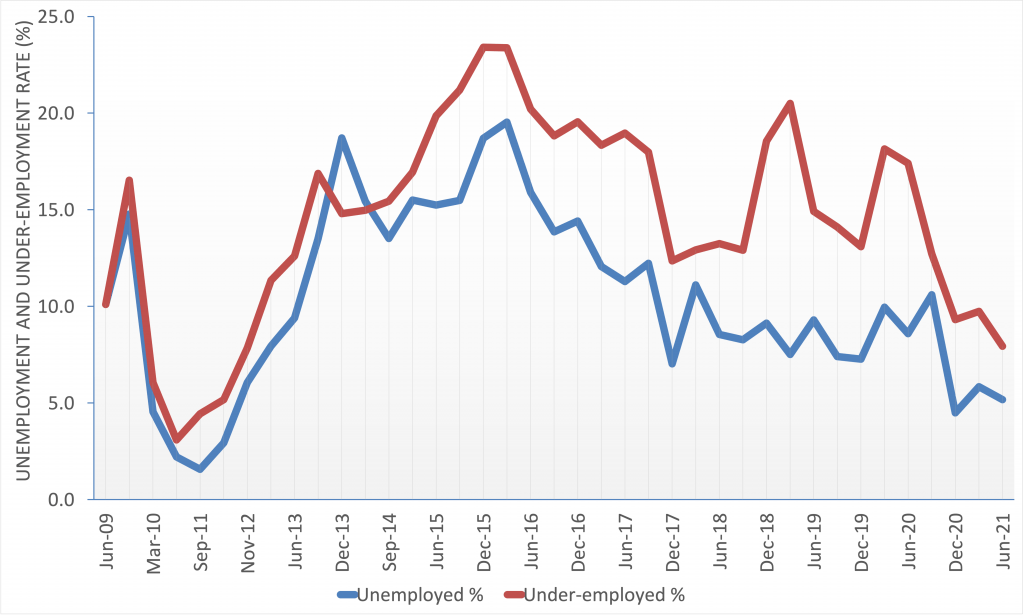Geoscientist Employment in Australia: Second Quarter 2021
The latest quarterly Australian Geoscientist Employment Survey conducted by AIG during July, recording employment results for the second quarter (April to June) of 2021 recorded a slight decline in the unemployment rate, falling from 5.8% at the end of March, to 5.2% at the end of June. This represents the lowest geoscientist unemployment result since June 2012.
The underemployment rate amongst self-employed geoscientists also decreased from 9.7% at the end of March to 7.9% at the end of June, the lowest rate recorded by these surveys since September 2012.

On a state-by-state basis, South Australia recorded a result of full geoscientist employment (no geoscientists responding as being unemployed in the state). The unemployment rate in Western Australia was 3.8%, followed by Queensland with 6.7%, Victoria with 7.1% and New South Wales with 7.7%.
The underemployment rates amongst self-employed geoscientists ranged between 5.0% in Western Australia to 21.4% in South Australia.
| State | Unemployed (%) | Under-employed (%) |
| New South Wales & ACT | 7.7 | 7.7 |
| Queensland | 6.7 | 8.9 |
| South Australia | 0.0 | 21.4 |
| Victoria | 7.1 | 7.1 |
| Western Australia | 3.9 | 5.0 |
Too few survey responses were received from Tasmania and the Northern Territory to produce state-based results.
More than half of the survey respondents who were either unemployed or unable to generate their desired level of self-employment had been unable to do so for more than 12 months, demonstrating that long-term unemployment remains an issue for the geoscience profession in Australia.
Some 44% of unemployed or underemployed geoscientists were not confident of regaining employment within the next year.
In contrast to this, 64% of geoscientists currently in employment were confident of remaining in work for the next 12 months and beyond.
Half of the geoscientists who responded to the survey reported that their employment conditions had been maintained over the past year, while a further 43% reported that their employment conditions had improved.
Some 41% of survey respondents reported having more than 30 years professional experience while only 11% had 10 years experience or less. This potentially points to a looming issue for Australian industries reliant on geoscience skills, knowledge and experience entering the profession to pursue geoscience careers. The result may be influenced by early-career geoscientists not taking up professional institute or learned society membership, but there is other, compelling evidence supporting this view in declining geoscience enrolments at Australian universities and fewer universities offering geoscience courses that help students gain the skills needed to pursue careers in many professional sectors, including exploration and mining. Almost 80% of geoscientists currently working in Australia gained their highest qualifications from Australian universities.
Australia’s resource industries currently employ as many as two in three geoscientists employed in this country.
The next survey will open for contributions at the beginning of October, recording employment during the third quarter of 2021.
Sincere thanks are extended to the geoscientists who contributed to this survey. AIG encourages all geoscientists in Australia to participate in the next survey and promote the survey to their friends, peers, and colleagues to support the Institute’s work to track employment trends in Australian geoscience.